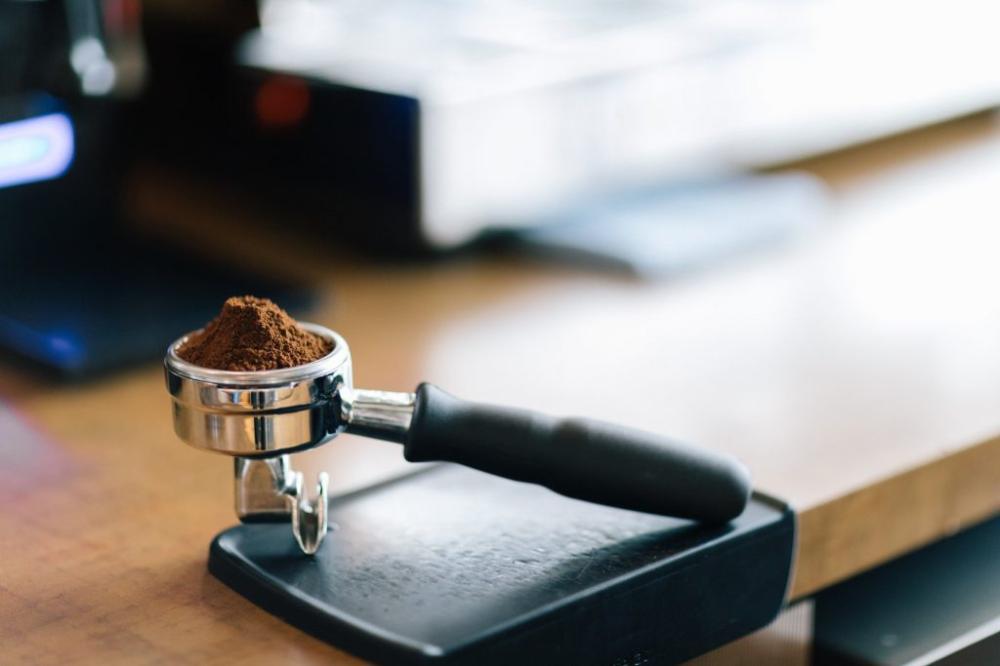Coffee is an art that requires precision in every detail, and one of the most important tools that makes a difference in the espresso-brewing experience is the portafilter . Whether you're a coffee enthusiast or a novice barista, choosing the right portafilter can be a crucial step in improving the quality of your coffee. In this article, we'll take you on a journey to understand how to determine portafilter size and choose the one that best suits your needs.
What is a portafilter?
A portafilter is the metal or plastic part of an espresso machine that contains a basket for ground coffee. It is inserted into the machine's group head to prepare espresso. Portafilters come in a variety of sizes and types, and choosing the right size depends on your machine and personal preferences.
Why does portafilter size matter?
Choosing the correct portafilter size affects:
- Coffee Quantity : The size of the basket determines the amount of coffee you can use, which affects the strength and flavor of the espresso.
- Machine Compatibility : The portafilter will not work properly if it is not compatible with the group head on your machine.
- Brewing Experience : The right size makes tamping easier and ensures consistent extraction.
How do you know the portafilter size?
To find out the portafilter size for your machine, you can follow these steps:
1. Check the machine manual.
The first step is to consult your espresso machine's user manual. The manual typically specifies the portafilter size (in millimeters) or type (such as 58 mm or 54 mm). If you don't have the manual, check the manufacturer's website or contact customer service.
2. Manually measure the diameter.
If you don't find the information in the manual, you can measure the portafilter manually:
- Remove the basket from the portafilter.
- Use a ruler or tape measure to measure the inside diameter of the basket (from the inside edge to the opposite edge).
- Common sizes are:
- 58 mm : Most common in advanced commercial and home machines (such as La Marzocco, Breville, or Rancilio Silvia).
- 54 mm : Common in some home machines such as the Breville Bambino.
- 51mm or 53mm : Found on smaller machines such as De'Longhi or some Gaggia models.
- 49 mm or less : Rare, found on older or cheaper machines.
3. Compatibility Test
If you're purchasing a new or replacement portafilter, make sure it fits the group head. You can try inserting the portafilter into the machine—if it fits tightly and without leaks, it's good.
Types of portafilters
In addition to size, there are different types of portafilters you should consider:
- Pressurized Portafilter :
- It has a single-hole or very small hole basket, making it easy to prepare espresso for beginners.
- Suitable for home machines or when using pre-ground coffee.
- Non-Pressurized Portafilter :
- It has a basket with multiple holes that require precise grinding and even pressure.
- Ideal for professional baristas who want complete control over the flavor of their espresso.
- Naked/Bottomless Portafilter :
- It does not have a base, allowing you to see the extraction process directly.
- Useful for diagnosing pressure or grinding problems, often used by professionals.
How to choose the right portafilter?
When choosing a portafilter, keep the following points in mind:
1. Machine compatibility
Make sure the portafilter size matches the group head on your machine. For example, if your machine uses a 58 mm portafilter, a 54 mm one cannot be used.
2. Your experience level
- Beginners : Choose a compact portafilter because it helps you get good espresso even if your grind isn't perfect.
- PROS : Choose a non-pressurized or bottomless portafilter to improve extraction quality and flavor control.
3. Basket capacity
Basket capacity varies depending on the number of doses:
- Single Shot : 7-10 grams of coffee.
- Double Shot : 14-20 grams. Choose a basket that matches the amount of espresso you prefer to prepare.
4. Materials and quality
- Stainless steel : Durable and easy to clean, it is the most popular choice.
- Chrome or copper : Used in high-end machines to improve thermal stability.
- Avoid plastic portafilters if you're looking for high quality.
5. Comfort in use
Look for a portafilter with a comfortable handle and an appropriate weight. Some portafilters come with ergonomic designs that reduce hand fatigue during frequent use.
Additional tips to improve your experience
- Regular Cleaning : Wash the portafilter and basket after each use to remove coffee residue and oils.
- Use precise tools : Invest in a digital scale and a tamper that's the same size as your portafilter to ensure consistent extraction.
- Experiment with different types : If you're using a bottomless portafilter, monitor the flow of espresso to determine if you need to adjust the grind or pressure.
Choosing the right portafilter depends on knowing its precise size and understanding your needs as a coffee lover. Whether you're a beginner looking for ease of use or a professional seeking to enhance flavor, the right portafilter will make a world of difference to your experience. Start by measuring your machine's portafilter, choose the type and capacity that best suits your style, and enjoy every sip of perfect espresso. For the best coffee tools and equipment, or even a consultation on coffee and its accessories, contact us now at Luxury Coffee.

